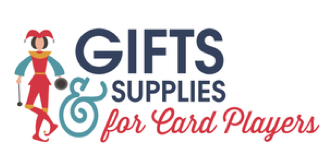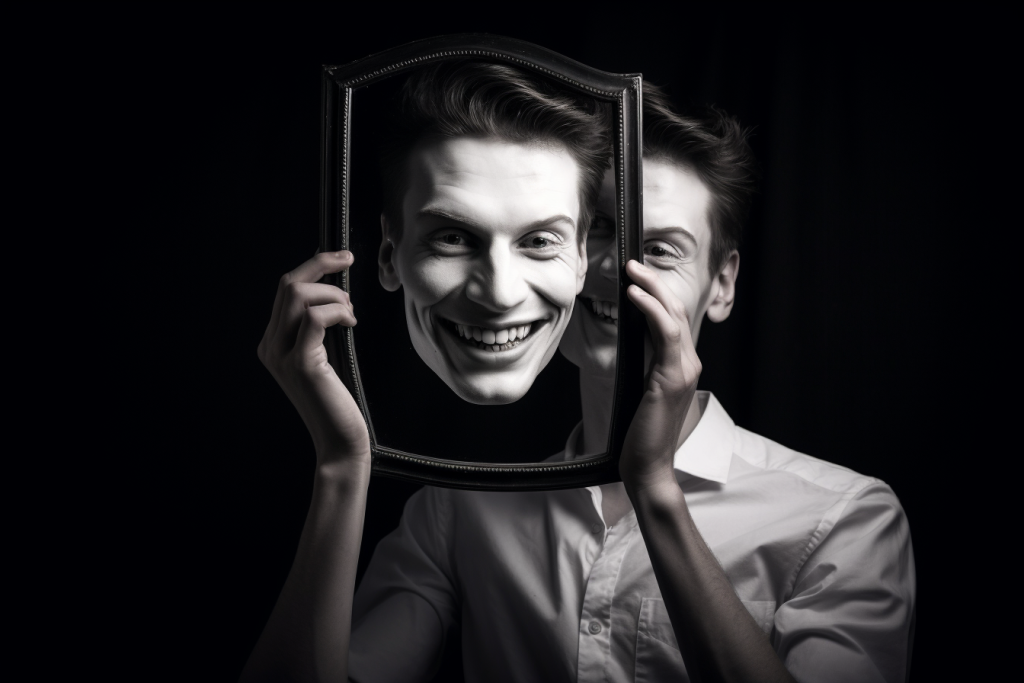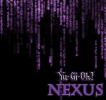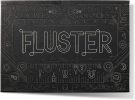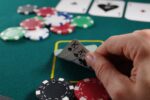Beyond Poker Faces: Exploring Facial Expressions and Body Language in Playing Card Games
What cues can one read in a card player’s facial expressions and body language? Beyond the strategic decisions and calculated moves lies a fascinating realm of non-verbal communication and the art of reading facial expressions. We take a look at facial expressions and non-verbal cues in card games, exploring how players use these subtle signals to gain insights, bluff opponents, and enhance their gameplay.
Reading the Table
Observing the table is an essential skill for any card player. Beyond focusing on the cards in hand, players can gain valuable insights by observing their opponents’ facial expressions and body language. The table becomes a theater where emotions play out, providing clues about the strength of opponents’ hands or their reactions to community cards.
The Power of Facial Expressions
Facial expressions are a universal language, capable of conveying a wide range of emotions and intentions. In card games, players can leverage facial expressions to communicate their confidence, doubt, excitement, or despair without uttering a single word. A simple twitch of the eyebrow, a slight curl of the lips, or a fleeting sparkle in the eyes can speak volumes to observant opponents.
Microexpressions and Subtle Cues
Microexpressions are brief, involuntary facial movements that reveal true emotions, often lasting only fractions of a second. Skilled players develop the ability to recognize these fleeting expressions, which can provide invaluable information about an opponent’s hand or intentions. Subtle cues such as a slight nostril flare, a micro-frown, or a barely noticeable eye twitch can hold significant meaning for astute players.
During a high-stakes poker tournament, I found myself seated next to a seasoned player known for his impeccable poker face. However, as the game progressed, I noticed a subtle, involuntary twitch near his right eye whenever he held a strong hand. It was a microexpression that I picked up on and used to my advantage, making strategic decisions based on his hidden excitement.
Many poker players choose to wear dark glasses, commonly referred to as “poker shades” or “sunglasses,” to conceal their eye movements and prevent opponents from reading their reactions. The primary purpose of wearing dark glasses is to hide any involuntary or subtle eye movements, such as dilations or twitches, that may give away the strength of their hand or their emotional state.
Your poker face – it’s a skill
While reading opponents’ facial expressions is crucial, you must also master the art of maintaining a stoic, unreadable demeanor, commonly referred to as the “poker face.” A poker face shields players’ emotions, making it difficult for opponents to decipher their true intentions. Players must find a delicate balance between revealing enough information through controlled expressions while concealing their true thoughts and emotions.
In a friendly game of Texas Hold’em, I decided to test my bluffing skills. As I raised the bet, I maintained a confident grin, hoping to convince my opponents that I held an unbeatable hand. Little did they know, my actual cards were far from impressive. But I controlled my face and exuded unwavering confidence, And it worked! I successfully bluffed my way to victory, capitalizing on their hesitation and folding.
Here’s another story. Playing a game of bridge with my regular card group, one of the players unknowingly betrayed his excitement when he was dealt a winning hand. A barely noticeable widening of the eyes and a subtle smile gave away his genuine satisfaction with the cards. Recognizing this, I adjusted my bidding strategy accordingly, and was not taken to the cleaners!
Maintaining a Poker Face is a skill that you can get better at with practice. One time, me and a group of friends decided to test our ability to maintain a poker face. As the stakes rose, the challenge intensified. It was an exercise in controlling our facial expressions and suppressing any revealing emotions. The room filled with tension as we all fought to keep our true thoughts hidden behind our stoic exteriors. Oh, and it was a lot of fun!
Not just the face – a player’s hands can also be a tell
At most card games, the players are sitting at a table. They might jiggle knees or shuffle feet but for the most part, the face and hands are the biggest tells. Hands can play a significant role in body language during card games and other social interactions. The movement and positioning of hands can provide valuable cues about a player’s emotions, intentions, and level of comfort. Is the player confident or nervous? Did your last bid cause distress or not? Are they feeling nervous about a bluff? Here are some examples of a ‘tell’
- Nervous Fidgeting: When players feel anxious or uncertain about their hand or the game’s progress, they may exhibit nervous fidgeting with their hands. This could involve tapping fingers on the table, drumming fingers, or repeatedly shuffling and repositioning the cards in their hands. Such hand movements can indicate heightened stress or unease.
- Protective Gestures: In an attempt to create a sense of comfort or protectiveness, players may use their hands to shield their cards or cover their mouth. Placing a hand near the mouth while considering a move can indicate contemplation or hesitation. Similarly, crossing arms or gripping the edge of the table may be an instinctual way to create a sense of security during tense moments.
- Confident Gestures: On the other hand, confident players may exhibit more open and relaxed hand gestures. They might lean back comfortably in their seat, rest their hands casually on the table, or use expansive gestures to emphasize their point or communicate dominance. These gestures can convey a sense of self-assurance and assertiveness.
- Quick Reaches: Sudden or jerky movements, such as reaching for a pencil or coffee cup, can indicate a momentary spike in anxiety or stress. It could imply that a player is trying to distract themselves or alleviate nervous tension by engaging in a seemingly unrelated activity. These quick movements may be subconscious attempts to find comfort or regain composure.
- Steady Hands: Players with a steady and controlled demeanor often exhibit calm and deliberate hand movements. They may handle their cards with precision, neatly stack chips, or execute smooth and precise gestures during gameplay. Steady hands can be an indication of focus, confidence, and a composed mindset.
Psychology and Deception
Understanding the psychology of facial expressions and non-verbal communication is a vital aspect of successful card playing. By intentionally manipulating their facial expressions, you can actually deceive opponents and create false narratives about your hand’s strength. Strategic use of non-verbal cues can lead opponents astray, causing them to misinterpret the true intentions of a player’s actions.
Cultural and Individual Variations
It’s important to remember that facial expressions and non-verbal cues can vary across cultures and individuals which adds further complexity to the game. What might be considered a telltale sign of nervousness in one culture could be a customary gesture in another. Likewise, individual idiosyncrasies and personal habits can shape the way players express themselves non-verbally. Awareness of these cultural and individual variations can be advantageous in decoding opponents’ signals accurately.
The Role of Technology
OK this is a tough one. Online poker does not allow you to read the body language and nuances of a player. While live dealer games go some way to fixing this, they cannot do it fully. Without physical presence, players rely on virtual avatars, chat features, and emojis to convey their emotions. These digital cues, although different from facial expressions, can still hold potential for strategic play and deception. Adapting to this evolving landscape requires an understanding of how technology influences non-verbal communication.
The most common method used is chat. While not conveying facial expressions directly, players can use text-based communication to convey emotions, bluff, or engage in psychological warfare. Strategic use of chat messages can influence opponents’ perceptions and disrupt their concentration, adding an additional layer of psychological gameplay.
Timing and speed can also be a factor. The speed at which players make their moves and the timing of their actions can serve as non-verbal cues. Deliberate delays, quick decisions, or consistent timing patterns can be interpreted by opponents to derive insights into a player’s confidence, decision-making process, or hand strength. Skilled players can strategically manipulate the timing and pace of their actions to mislead opponents and create false perceptions.
And finally, consider bet size and patterns. The size of bets placed by players in online card games can act as a form of non-verbal communication. Consistent bet sizing patterns or sudden deviations from established patterns can convey information about the strength or weakness of a player’s hand. Observant opponents can analyze these betting cues and adjust their own strategies accordingly.
Beyond the mathematical calculations and strategic decision-making, card games are enriched by the intricate dance of facial expressions and non-verbal cues. Understanding and harnessing this silent language can give players a significant advantage in deciphering opponents’ intentions and controlling their own signals. By honing their ability to read and project non-verbal cues, players can unlock a new level of gameplay, mastering the art of non-verbal communication in the thrilling world of card games. So, next time you sit at the card table, remember to pay attention to the subtle expressions and unspoken messages that shape the game.
